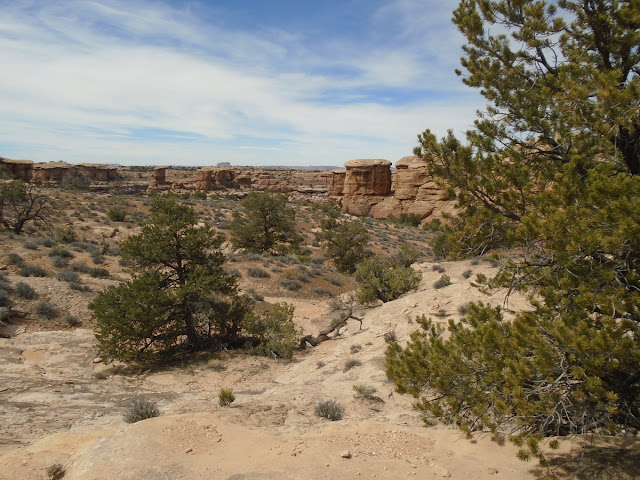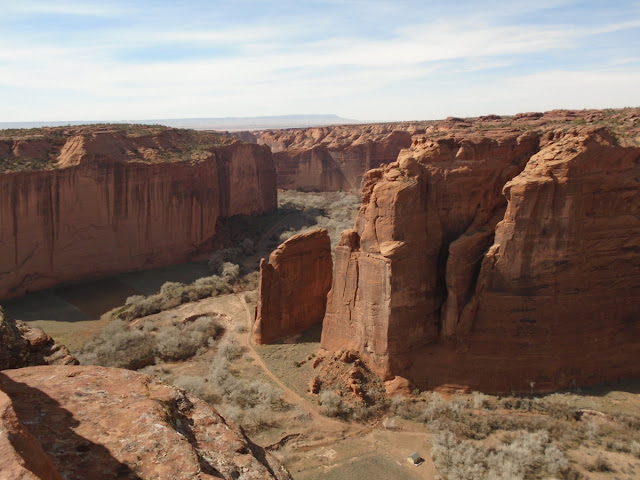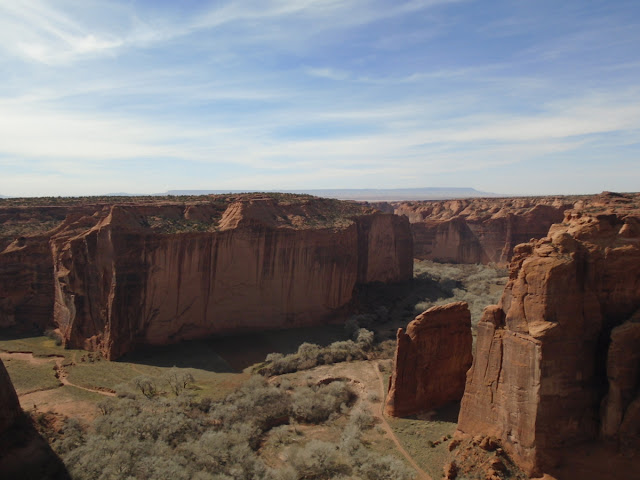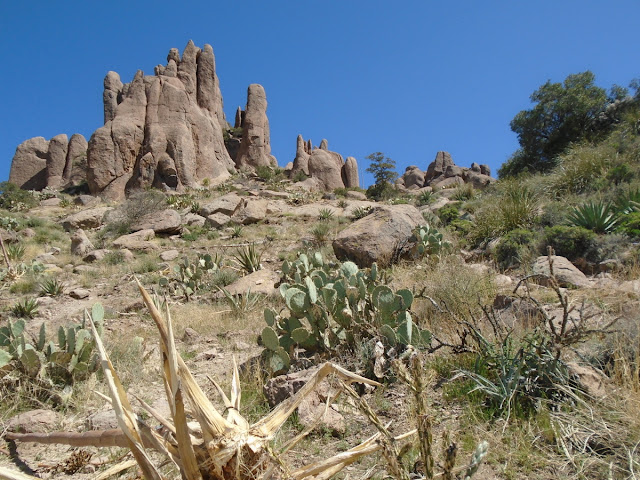It's already up at the freezing mark, and the sun is shining from a clear blue sky. Yes, we obviously have come a long way since the last time I wrote: after visiting Canyonland NP on a very hot day on Sunday and Arches NP with pleasant 21 degrees on Monday we left Green River, about an hour from Arches, in the rain yesterday morning. Cloudy skies with intermittent showers stayed with us, and on the long climb up to Soldier's Pass south of Salt Lake City it was only +5 degrees, but by the time we reached SLC it was back to +14, only slightly cooler when we reached Idaho Falls in the evening, our destination for the night.
It was a driving day yesterday, with no break to take a walk, just a few stops to stretch our legs, but we did enough walking/hiking the two days before, and in a gorgeous landscape at that.
Since Canyonland NP is quite spread out and consists of two different parts we decided on the southern part, 'The Needles', which is closer to Blanding, where we stayed the night. It still was about an hour's drive until we reached the turn-off to the park, and another 50 km from there to the visitor centre. Up to the park entrance itself the road leads through open range with Texas gates, and there was ranching even in the park itself into the Seventies. There are no lush pastures here, just the usual small shrubbery, at this point looking pretty dry, too, but the cows we saw seemed quite content, maybe a bit on the skinny side. But of course we have often seen in South America how sparse vegetation can still sustain a herd of cattle. Cows, like other animals and plants, have an amazing ability to adapt to what's available.
Even before reaching the park entrance the landscape is interesting, at times stunning, with high sandstone walls, and hiking trails lead into the hills. We reached the visitor centre at lunchtime, picked up a map and got some hiking tips from the ranger. The visitor office closes at five, but the park is accessible 24 hours. Since we didn't have time to stop at all the view points – not that it would be necessary or even desirable to just check them off a list – we started at the point furthest away from the visitor centre and hiked the Slickrock Trail.
On this trip, finally, I realized that all these years I talked about 'sliprock' when the right term would have been 'slickrock'. My apologies to anybody who read this and knew better. :-) Maybe it was a Freudian slip because I was afraid to slip on the rock? In any case, I still think my name was not totally inappropriate either and descriptive enough, even though usually this smooth rock is great to walk on even on quite a slope: the footing is a lot firmer than on loose sand and gravel. Even if submerged in water, as on entering the first and hottest of the pools at the Arizona hotsprings, this is still true.
The biggest difficulty on this trail would have been to not get lost, but very regularly places small cairns made it easy to find the right way. Walking on slickrock almost the whole way, with just a little up and down, we had stunning views all along the way, gazed into canyons with colourful, many-layered and textured rocks and saw the snow-capped mountains in the distance. It was very hot, 27 degrees when we started and likely warmer during our hike, and there was very little shade, and I struggled a bit with that. For the scenery and the views it couldn't have been any better, though, and a rest at a sheltered picnic spot cooled us down a bit again.
Pothole Point, our next stop, would have been more interesting after a rain. Here, potholes in the rock, like tide pools, are home to a community of small creatures like mollusks and worms who need to make use of the brief time before the water evaporates again to proliferate. Now, the potholes were dry, but of course they are still homes for these small creatures and visitors are asked to avoid stepping in them. Not all heed this, sadly, just like not all stay away from the fragile soil.Compared to the first two hikes the third led through an almost lush area. On the Cave Creek trail we encountered gambel oak, skunkbrush, rabbitbrush and several other woody shrubs, all possible because of a spring. Water seeps out of the rock in one of several caves facing these bottom lands, enough that it even provides enough moisture for small ferns forming a bright green fringe along the wall. These conditions made this area a favourite place for people: rock etchings (which we missed, somehow), and the smoke-blackened ceilings of the caves indicate that thousands of years ago this was a place of shelter. In another cave we could see remnants of an old cowboy camp. I enjoyed the plants, as always, and also the shadier, a little cooler conditions on this hot day, and even the mention of two ladders by the ranger didn't deter me: after visiting Bandelier NM in New Mexico a few years ago I know that they don't pose an insurmountable obstacle for me. These here were just a couple of metres high, anyway, so no problem at all.
The last stop was very close to the road, aptly called Roadside Ruin. Tired from the heat, we were quite happy that it was only maybe three hundred metres of easy walking to get there. It turned out to be not a ruin at all, but a very well preserved semi-circular small structure attached to the wall of a cave. The assumption is that this was used for storage, possibly a kind of grainary. It was high enough above the bottom of the canyon that filling and emptying it would have required an effort, but not impossible by any means.
At the parking lot for this little hike we met a couple from Victoria, BC, the first Canadians in quite a while, who told us that they had decided to visit Canyonland first and Arches the next day because Arches was so congested that people were being turned away. It hadn't even occurred to us that this could happen: Canyonland was very quiet, and we didn't yet know that Arches is one of the most visited national parks in the US. What would expect us the next day for our planned visit?

































































